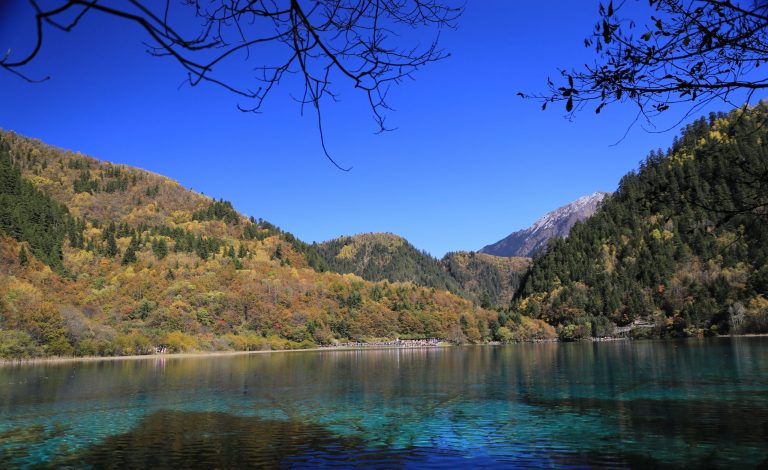- Method Principle
In an alkaline medium (pH = 11.7) in the presence of sodium nitroferricyanide, ammonia and ammonium ions in water react with salicylate and hypochlorite ions to form a blue compound. The absorbance of this compound is measured at 697 nm to quantify the ammonia nitrogen content.
- Instruments and Reagents
- Instruments
– Visible spectrophotometer (equipped with 10 mm/30 mm cuvettes).
- Key Reagents
– Color Developing Reagent (Salicylate-Potassium Sodium Tartrate Solution): Store in a brown glass bottle with a rubber stopper in the dark; stable for 1 month.
– Sodium Hypochlorite Working Solution: Available chlorine concentration of 3.5 g/L, free alkali concentration of 0.75 mol/L (calculated as NaOH); store in a brown dropper bottle; stable for 1 month.
– Sodium Nitroferricyanide Solution: 10 g/L; stable for 1 month.
– Standard Solutions:
– Stock solution: 1000 μg/mL.
– Intermediate solution: 100 μg/mL (stable for 1 week, prepared by diluting 10.00 mL of stock solution to 100 mL in a volumetric flask).
– Working solution: 1 μg/mL (prepared fresh by diluting 10.00 mL of intermediate solution to 1000 mL in a volumetric flask).
III. Operational Procedures
- Sample Preparation
– Collection and Preservation: Samples are stored in polyethylene or glass bottles. For long-term storage, acidify the water to pH < 2 with sulfuric acid and store at 2℃–5℃ for up to 7 days.
– Pre-Distillation: Transfer 250 mL of the water sample (or a diluted sample with high ammonia nitrogen content, made up to 250 mL with water) into a flask. Adjust the pH to 6.0–7.4 (using bromothymol blue indicator) with sodium hydroxide or sulfuric acid. Add 0.25 g of light magnesium oxide and a few glass beads, then connect to a distillation unit. Distill into a receiving bottle containing 50 mL of 0.01 mol/L sulfuric acid absorption solution, ensuring the condenser outlet is below the liquid surface. Collect 200 mL of distillate, then dilute to 250 mL with water.
- Sample Testing
– Calibration Curve:
– For 10 mm cuvettes: Prepare standard series with ammonia nitrogen contents of 0–8μg (see Table 1 in the original document).
– For 30 mm cuvettes: Prepare standard series with ammonia nitrogen contents of 0–2μg (see Table 2 in the original document).
– After adding reagents and developing color for 60 minutes, measure absorbance at 697 nm. Plot a calibration curve with absorbance (after blank subtraction) as the ordinate and ammonia nitrogen content (μg) as the abscissa.
– Sample Measurement: Take 8.00 mL of the water sample (or diluted sample if ammonia nitrogen concentration > 1.0 mg/L) into a 10 mL cuvette. Add 1.00 mL of color developing reagent, 2drops of sodium nitroferricyanide solution, and 2 drops of sodium hypochlorite working solution. Mix, dilute to the mark with water, and develop color for 60 minutes. Measure absorbance at 697 nm using the same cuvette type as the calibration curve, with water as the reference.
– Blank Test: Replace the water sample with deionized water and follow the same procedure for pretreatment and measurement.
- Result Calculation

Where:
-As : Absorbance of the sample;
-Ab : Absorbance of the blank test;
– a: Intercept of the calibration curve;
– b: Slope of the calibration curve;
– V: Volume of the test sample (mL);
– D: Dilution factor of the water sample.
- Methodological Parameters
- Detection Limit and Quantitation Limit
– 10 mm cuvette:
– Laboratory detection limit: 0.001 mg/L;
– Laboratory quantitation limit: 0.004 mg/L.
– 30 mm cuvette:
– Laboratory detection limit: 0.001 mg/L;
– Laboratory quantitation limit: 0.002 mg/L.
- Precision
– For standard samples with concentrations of 0.477 mg/L and 0.839 mg/L (n=10), the relative standard deviations (RSDs) are 2.45% and 1.07%, respectively, both meeting the standard requirements (≤2.94% and ≤1.55%).
- Linear Range
– 10 mm cuvette:
– Linear equation: Abs = 9.24078c – 0.0099, R = 0.9996;
– Range: 0–8μg (corresponding to 0–1.0 mg/L for an 8 mL test sample).
– 30 mm cuvette:
– Linear equation: Abs = 2.86547c + 0.02566, R = 0.9993;
– Range: 0–2 μg (corresponding to 0–0.25 mg/L for an 8 mL test sample).
- Precautions
– Strictly control the color development time at 60 minutes and avoid light exposure to maintain reagent stability.
– Store sodium hypochlorite working solution and color developing reagent as specified; re-prepare after the shelf life expires.
– Dilute high-concentration water samples to ensure absorbance falls within the linear range of the calibration curve.





